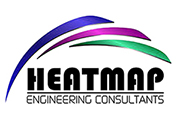 |
 |
 |
 |
INFRARED THERMOGRAPHY INSPECTION |
|||
| ELECTRICAL INSPECTION |
|
||
 |
What is Infrared Thermography Inspection? |
||
All objects with a surface temperature in excess of –273 °C, will naturally emit Infrared Radiation. The level or amount of which being dependent upon both the objects surface finish and of course it’s absolute temperature. Infrared Thermography inspection is a non contact method. Through a Infrared Imager to collecting this thermal data or radiation, and converting it into a meaningful and quantifiable thermal image in “real time” displayed upon a colour monitor, for either instant analysis the thermal pattern or for further detailed analysis by a specifically designed software in computer at a later date.
|
|||
 |
Why Thermography Inspection is needed? |
||
National Fire Protection Association (NFPA) is the world's most influential organization for fire prevention and electrical safety. NFPA recommended a systematic and regular schedule of Infrared Thermography inspection for electrical systems. There are beneficial to reduce the number of costly and catastrophic equipment failures, and unscheduled plant shut downs. Also, most of insurers will require the insured properties to carry out an annually or regularly thermography inspection for the electrical equipment in their policy. As all electrical equipment may change its condition by certain factors; such as atmosphere temperature, humidity, vibration, environment, dusty and metal fatigue. Those reactions would result in poor conductor contacts, loose or even oxidation. Because of high resistant, the fault connection will heat up abnormally. If not detected early, it may eventually to develop a short circuit, tripping, power outages or even worse a fire. |
|||
 |
Who are qualify to perform the Thermography Inspection? |
||
According to the guidelines of National Fire Protection Association (NFPA) and American Society for Nondestructive Testing (ASNT). They recommend that Infrared Thermography Inspections should be performed by qualified and trained professionals. The Certified Thermographers who had greatly understanding of infrared technology in order to accurately determine and analysis the faults, also they could ensure the quality of each inspection. On the other hand, if untrained inspectors who lack of sufficient knowledge and poor experience to perform the Infrared Inspection, they may be getting wrong information or even ignore faults. Wrong determined can caused unnecessary spending or even increased maintenance costs. If faults are ignored, the potential crisis may be overlooked and the consequences can develop to major problems or even worse a fire. Moreover, unqualified inspectors are not good enough for performing a quality inspection. As a result, this inspection reports will not be useful for fully understanding the situations. |
|||
 |
What is the Benefit of Using Thermography Inspection? | ||
|
|||
FOR MORE INFORMATION, PLEASE CONTACT US.
|
|||
| Copyright © 2014-2024. HEATMAP ENGINEERING CONSULTANTS LIMITED. All rights reserved. | |||